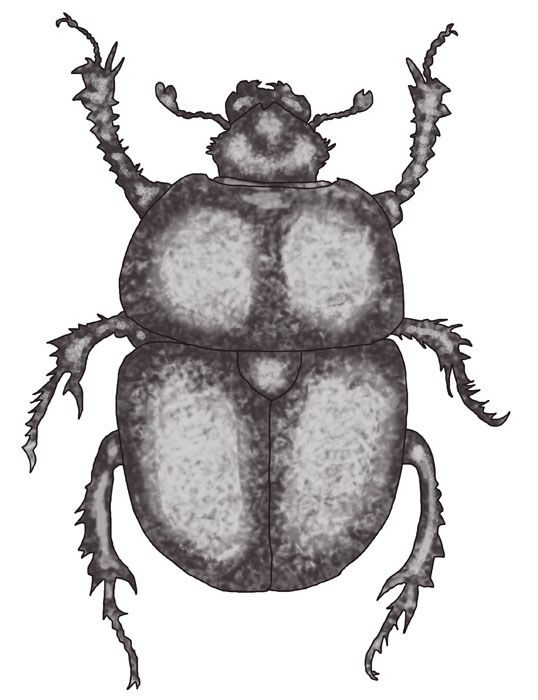
scarab beetles
Morphological characteristics
Insect beetles with often rounded bodies, in 3 parts (head, thorax, abdomen), 3 pairs of legs, 2 club-shaped antennae (sometimes ending in lamellae that can open like a fan), 2 pairs of wings, one of which pair corresponds to robust elytra (characteristic of beetles) which cover the second pair of flight-enhancing wings, chewing mouthparts.
Life cycle
The beetles lay their eggs in the ground. Beetles have a more or less long life cycle depending on the species (three years for the common beetle Melolontha melolontha for example). The larvae remain in the ground or in decomposing matter (dead wood, compost, etc.) during their development and emerge as adults.
Diet
Beetles are polyphagous and depending on the species they may have different preferences in the larval and adult state; they can be phytophagous, frugivorous (eat fruit), rhizophagous (eat roots), coprophagous (eat droppings) or saproxylophagous (eat dead wood). For example, the dung beetle ( Geotrupes stercorarius ) pushes up a ball of dung which it feeds on and in which it lays its eggs before burying it. Thus the larvae will already have something to eat when they are born. The rose chafer ( Cetonia aurata ) in the larval state feeds on decaying matter and then flower pieces in the adult state, and the common chafer feeds in the larval state on plant roots and then on tree leaves in adulthood.
Natural predators or regulators
The beetles are easily taken by birds in the adult form and hedgehogs when they are in the larval state.
Habitats
Beetles can live in all environments: open environments such as meadows or closed environments such as in wooded areas.
Interests in the garden
Coprophagous beetles such as the dung beetle can enrich the soil of the garden by making balls of excrement which they bury afterwards, or the beetles of the cetonia type help in the larval state to degrade organic matter. The other beetles, although they can eat roots, leaves or flowers on plants, do little damage, especially when they are regulated by predators.
Did you know ?
The Egyptians believed that the sun rose through a huge beetle that pushed it like a ball of dung.
Beetles are the animals that can carry the most times their weight. The rhinoceros beetle holds the record and can carry up to 850 times its weight.





